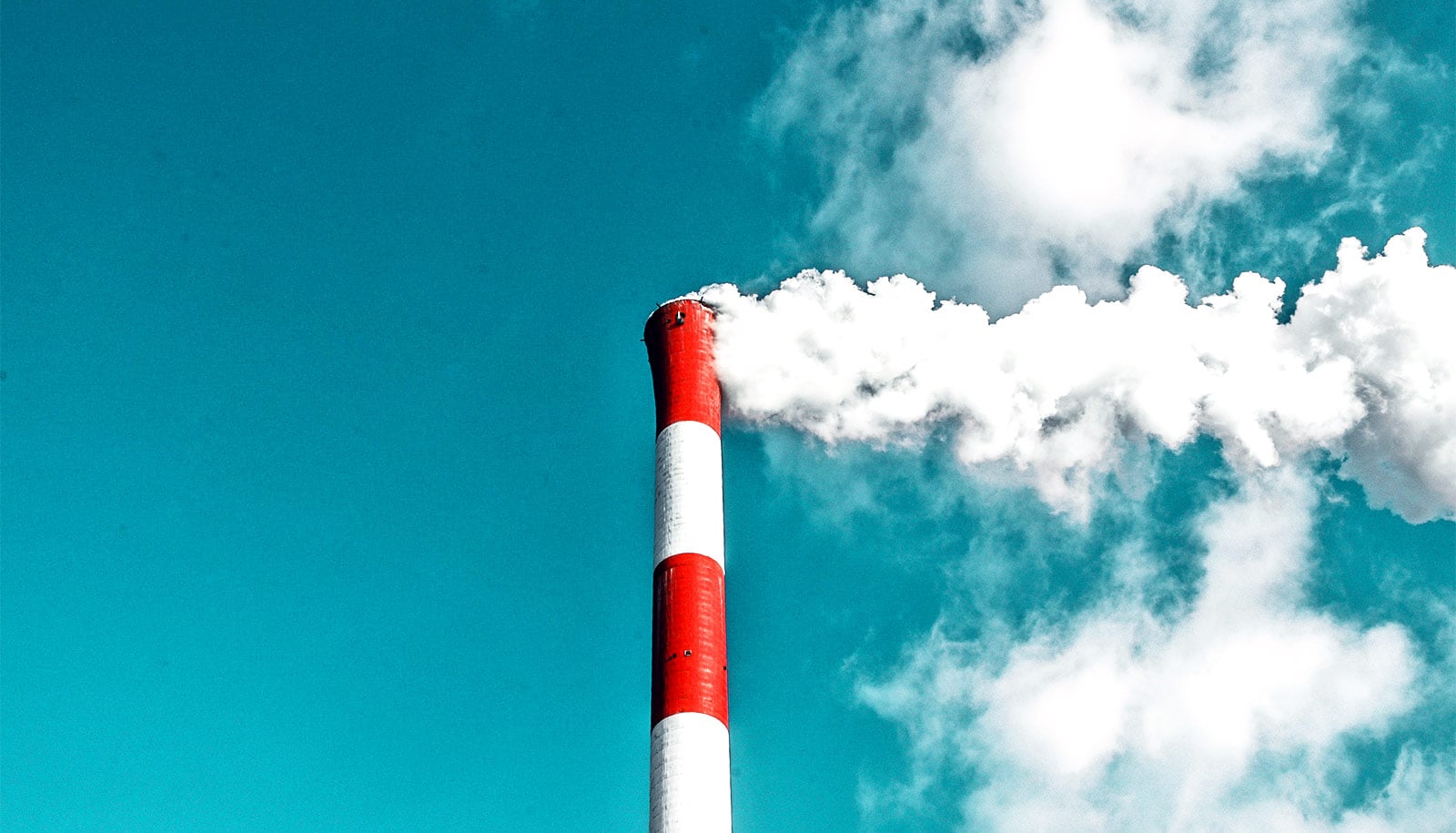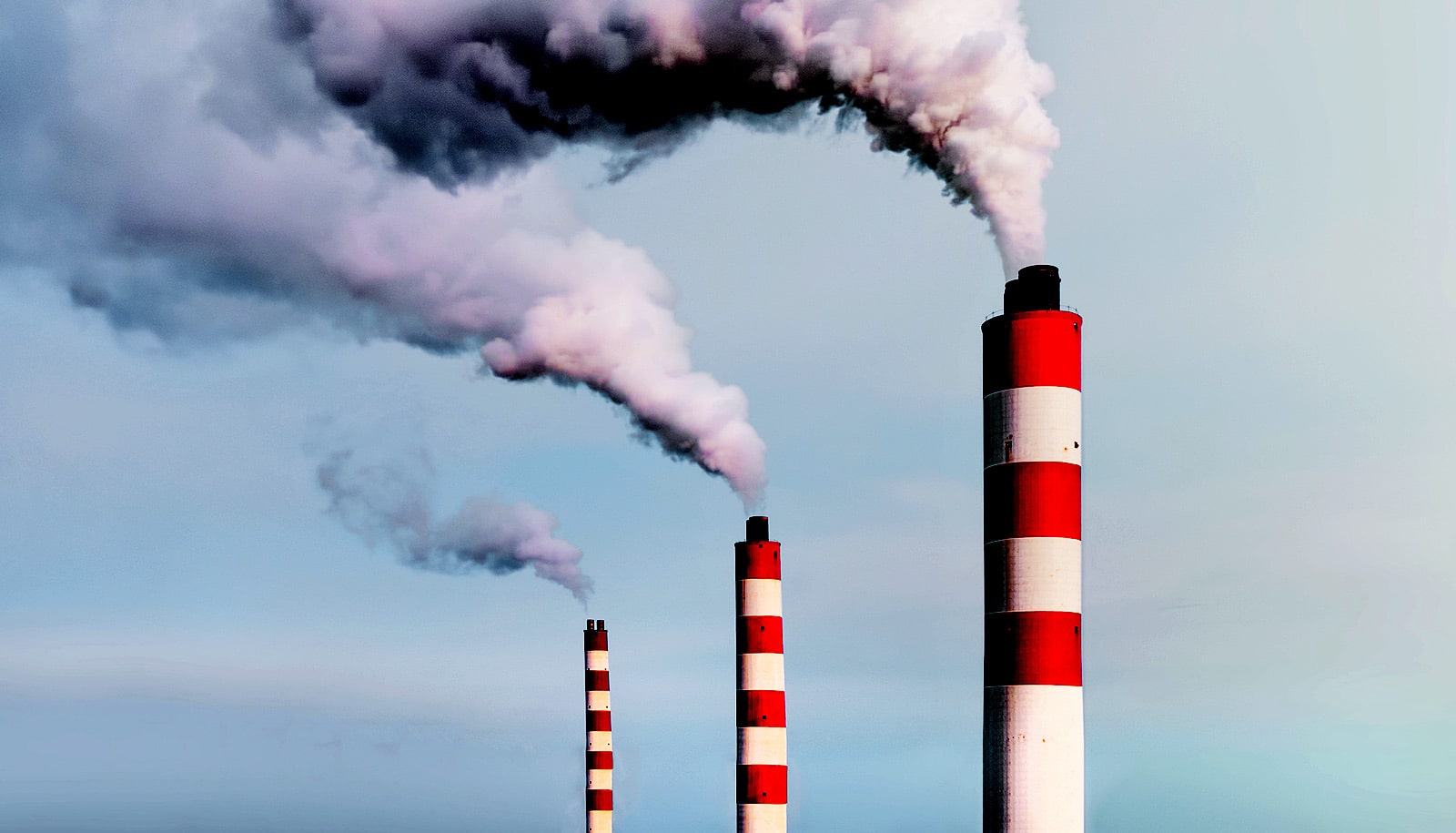
(Credit: Devon Devine/Unsplash )
New emissions regulations will clear the air—eventually
"We're basically saying: 'Hold on, don't worry. Things might look like they're getting worse, in some places, but overall they should get better.'"

Declining levels of nitrogen oxides due to tighter emissions standards will ultimately lead to cleaner air—but it might take longer than first thought.
As air quality improves, the invisible chemistry happening in the air around us is changing. Skies should clear up as emissions drop, but recent results suggested that declining nitrogen oxides can create an environment where airborne carbon-containing compounds more easily convert into small particles that harm human health.
Regulators can now breathe easier, researchers say. A new study provides a fuller picture of the relationship between nitrogen oxides—the tailpipe-generated particles at the center of the Volkswagen scandal, also known as NOx—and PM2.5, the microscopic particles that can lodge in lungs.
A key finding is how the concentration of NOx changes the chemistry of the hydrocarbon vapors that transform into the particles less than 2.5 microns across, or about 3 percent the width of a human hair—to affect the formation of PM2.5 found in smog.
“We found that there are two different regimes of PM2.5 formation,” says first author Joel Thornton, a professor of atmospheric sciences at the University of Washington. “One where adding NOx enhances PM2.5, and one where adding NOx suppresses PM2.5.”
‘Hold on, don’t worry’
The findings, which appear in the Proceedings of the National Academy of Sciences, could help explain why air quality appears to have stagnated in recent years over some parts of North America, even as emissions of all types have dropped. Regulators are concerned because air pollution is a leading human health hazard, especially among children, the elderly, and those with respiratory or heart problems.
Officials knew to expect slow progress on reducing ozone, another component of smog, because of a somewhat similar role that NOx plays in ozone formation. But the recent concern was that PM2.5 concentrations might be different, and would just continue to go up with decreasing NOx emissions.
“We’re basically saying: ‘Hold on, don’t worry. Things might look like they’re getting worse, in some places, but overall they should get better,'” Thornton says.
From worse to better
The discovery of this complex relationship could also help atmospheric scientists predict how air will change as emissions drop further.
Hydrocarbon vapors—carbon-based compounds from either natural sources or fossil fuels—do not readily convert to PM2.5. Only through a set of chemical reactions in the air that involve free radicals, produced by sunlight and modulated by NOx, do hydrocarbon vapors convert into particulates.
Researchers combined observations from a 2013 field campaign that measured emissions plumes in the air above Southeastern US cities as well as experiments conducted at the Pacific Northwest National Laboratory.
The ease with which hydrocarbons convert to PM2.5 shifts with the availability of the different ingredients, and the reaction rates also change. Both need consideration to understand the effect on regional PM2.5, the new study shows.
Even though the process of PM2.5 formation from hydrocarbons gets easier as NOx drops, the chemical reactions slow down. Together the two effects mean that, eventually, drops in nitrogen oxides will lead to drops in PM2.5.
“You could be in a regime where it gets worse, but if you push past it, it gets better,” Thornton says. “In most urban areas in the US, the NOx levels are low enough that we are past this point already.”
Previous research from Thornton’s group showed why winter air pollution is more resistant to emissions regulations than summer smog: because different temperatures provide seasonal conditions that send the chemistry down distinct paths.
Havala Pye at the Environmental Protection Agency, a former visiting scientist at the University of Washington, is a lead author of the paper. Additional coauthors are from the University of Washington, Pacific Northwest National Laboratory, the National Oceanic and Atmospheric Administration, and the University of Colorado, Boulder.
The Department of Energy, the Environmental Protection Agency, and the National Science Foundation funded the work.
Source: University of Washington
The post New emissions regulations will clear the air—eventually appeared first on Futurity.
Share this article:
This article uses material from the Futurity article, and is licenced under a CC BY-SA 4.0 International License. Images, videos and audio are available under their respective licenses.


